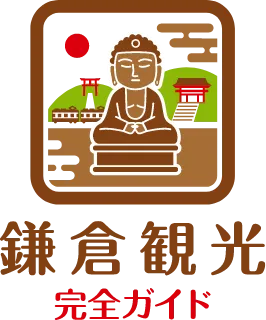Autumn Leaves at Zuisen-ji Temple (瑞泉寺)
Discover the Autumn Leaves at Zuisen-ji Temple (瑞泉寺)
Tucked away in the quiet hills of Kamakura, Zuisen-ji Temple offers one of the most peaceful autumn experiences in the region. Located in a secluded valley known historically as “Momijigayatsu,” the temple is embraced by brilliant maple, ginkgo, and other trees that turn vivid shades in late fall. The name of its mountain—Kinpeizan—refers to the surrounding hills, which resemble a folding screen painted in vibrant brocade.
Especially captivating is the view from the temple gate. The interplay between the tall cedar trees and the glowing autumn leaves creates a striking natural contrast. Fallen red leaves on the roof, and the gentle light filtering through the trees, make for a scene that quietly marks the end of Kamakura’s autumn.
When Is the Best Time to Visit?
Zuisen-ji Temple is known for having the latest peak foliage in the Kanto region, typically from late November to mid-December. Compared to other Kamakura spots, the leaves here turn about one to two weeks later. In some years, colors linger until late December or even into the new year.
The best time to visit is during the morning light or at sunset when the shadows create a golden glow across the temple grounds. The blend of red maples, yellow ginkgo, and orange grasses creates a painterly landscape throughout the season.
Photo Highlights and Must-See Spots
Framed Leaves from the Temple Gate
Before stepping through the gate, pause and use it as a natural frame for your photos. The view of Kinpeizan in full color through the gate’s opening, with cedar trees on either side, looks like a work of art. Early morning light enhances this effect with rays shining between the trees.
Garden by Muso Soseki
The temple’s garden, designed by the Kamakura-period monk Muso Soseki, is a nationally designated scenic spot. As Kamakura’s only remaining medieval garden, its carved rock formations and dry landscape style are softened by the autumn foliage. From the viewing path across the pond, reflections of red and gold leaves make for an ideal photo opportunity.
Flowers in Late Fall
In addition to the leaves, seasonal flowers bloom in early winter—white narcissus, soft pink winter cherry blossoms, and chrysanthemums. One of the winter cherry trees is said to have been planted by Tokugawa Mitsukuni (徳川光圀), and is recognized as a Natural Monument by Kamakura City. The contrast of delicate blossoms against the bold autumn hues is uniquely Zuisen-ji.
Embrace the Quiet Hours of Morning
The real magic of Zuisen-ji emerges in the quiet hours. The sound of birds, the crunch of leaves underfoot—these sensory details allow you to connect deeply with nature.
Guests staying at Tosh’s Place (トシズプレイス) can take advantage of the early morning or late afternoon to visit Zuisen-ji Temple at its most serene. The flexible, kitchen-equipped, unmanned lodging style lets you enjoy Kamakura at your own pace. As the sun sets, golden light bathes the temple, and the leaves seem to shimmer with timeless beauty.
How to Get There from Tosh’s Place (トシズプレイス)
Zuisen-ji Temple lies in a secluded valley on the outskirts of Kamakura, offering a quiet retreat far from the crowds. Even during the busy autumn season, it tends to be less crowded, allowing for a slower, more contemplative visit.
The temple also marks one end of the Ten’en Hiking Course, often called the “Kamakura Alps.” Nearby spots like Shishimai Valley are also known for vibrant foliage. If you’re staying at Tosh’s Place, consider visiting Zuisen-ji in the morning, enjoying a hike, and then returning in the afternoon to see the garden glow in the soft sunset light.
Wrap-Up: Late Autumn Serenity and Living Kamakura Like a Local
The foliage at Zuisen-ji Temple marks the gentle close of Kamakura’s autumn season. With its unusually late peak, the temple offers a calm, contemplative atmosphere alongside flowers like winter cherry blossoms and narcissus.
Staying at Tosh’s Place allows you to embrace Kamakura not just as a destination, but as a place to live and breathe in tune with the seasons. Enjoy this quiet corner of the city at your own pace, and let the beauty of late autumn leave a lasting impression.
Toshi’s Evaluation (2025)
| Evaluation Item | Score | Explanation |
|---|---|---|
| Scenery | 10 | Surrounded by the valley called “Momijigaoka,” the temple gate, historic garden moss, rocks, and buildings are brilliantly colored by autumn leaves, creating one of Kamakura’s most breathtaking views. |
| Accessibility | 7 | About 15 minutes by bus from Kamakura Station plus a 15-minute walk. The walk includes some hills and is a bit long, but signage is sufficient. |
| Historical Value | 9 | The garden created by Muso Soseki and the temple’s connection to the Ashikaga family mean it has high national historical value and is a designated scenic spot. |
| Comfort | 8 | Even in autumn foliage season, the area is less crowded and has a calm atmosphere compared to other tourist spots. Facilities and restrooms are maintained. |
| Reviews | 8 | Online ratings average around 4.5. The autumn leaves and gardens are highly praised, though some visitors mention that access could be improved. |
Total Score: 42
Zuisenji’s autumn foliage offers a sublime blend of vivid natural beauty, a nationally recognized historic garden, and tranquil atmosphere, making it a top sightseeing destination in Kamakura.
